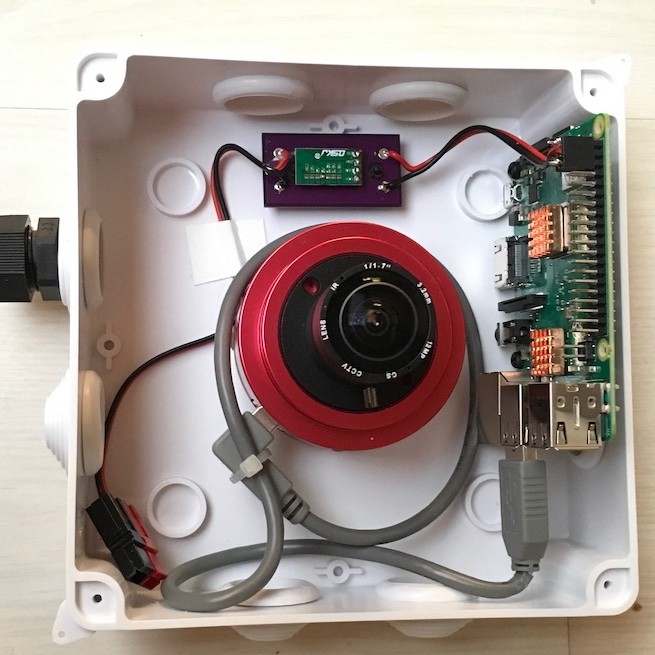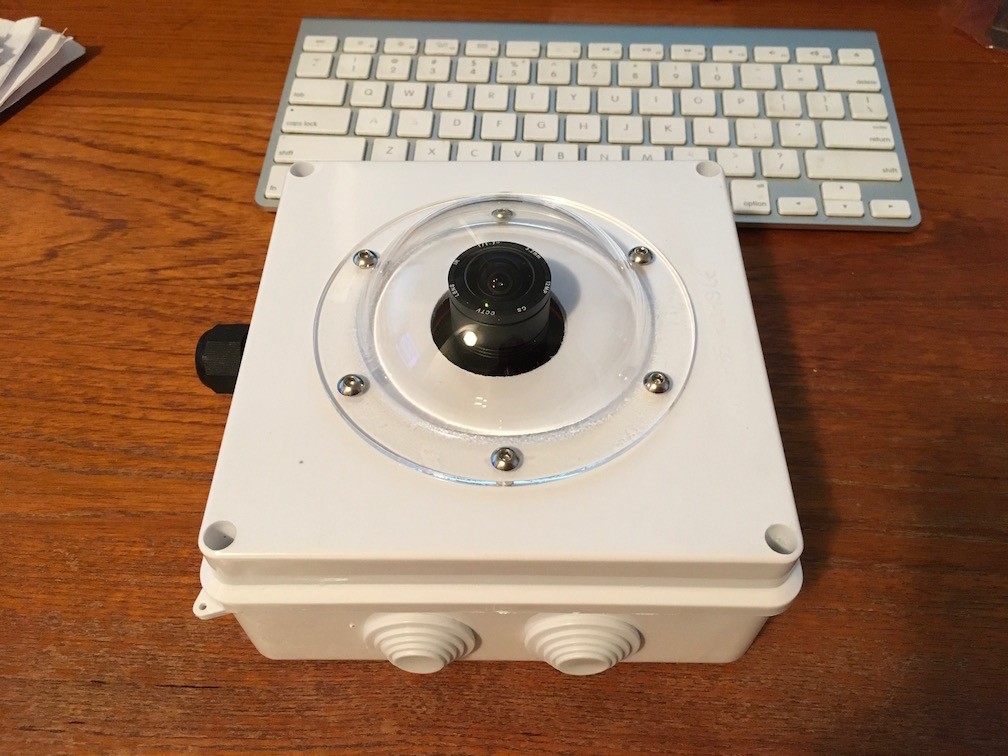mikeinlehigh Can you tell me the manufacturer of the f/1.7 C-mount lens you used?
Hi Mike,
I use this one:
https://www.amazon.com/gp/product/B08GLYR572
Depending on your situation, it may not be wide enough for you. But I don't have a very wide clearance (trees in Oregon, you know. Plenty of 100 foot firs in the property.)
The fisheye lens that comes with any ZWO cameras (there are two versions of the crap) is at most useful as a dust protector for the sensor. And that is being kind. It has utterly horrid MTF and completely unsuitable even for cameras with larger pixels.
My assembled camera, with dome removed, looks like this:

The Raspberry Pi 3 is an unused ASIAIR version 1. The purple board is a PCB that I made up to easily mount one of the ubiquitous buck/boost convertors from Amazon; it drops 12V to 5V, and wired directly to the 5V pins on the Rasberry Pi GPIO connector. You see the pigtail of a PowerPole connector, which I use to distribute 12V everywhere.
Camera is a ASI178MC, with said lens. The lens is substantially higher resolution that the free ones that ZWO ships, but much worse than the Fujinon C mount lenses that I use for my "lab" experiments; but I could not find a good wide enough Fujunon. My next one will use DSLR lens, since this lens' image circle will not cover the sensor size of an ASI294 camera.
This is the angle of view it gives me (also gives you a sense of the Sun (notice the internal reflection of the red camera body off of the acrylic dome at the bottom right of the picture):

North is up, east to the left. Polaris is just off of top center at night.
The box is a weatherproof ABS box and this is what it looks like buttoned up (RTV applied to the lip of the dome before bolting the dome to the box with stainless steel [a must] screws) :

The next one I am building will be using a pancake version of the ASI294MC (have a spare one), with a Samyang 8mm Fisheye. And much bigger enclosure and dome, with Raspberry Pi 4 running INDIGO Sky instead of ASIAIR. I will probably also go to a PoE ethernet to supply the power, and use for data. The above one uses WiFi, which works reasonably well, given that the enclosure is plastic, and within perhaps 5 to 6 meters from two different eero mesh routers
Chen